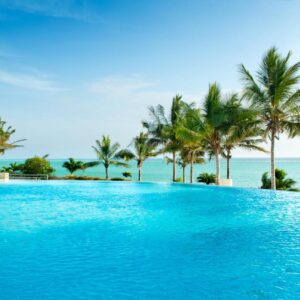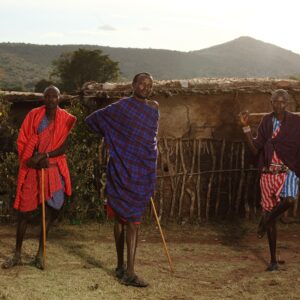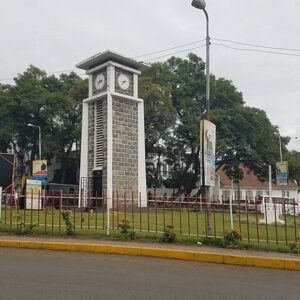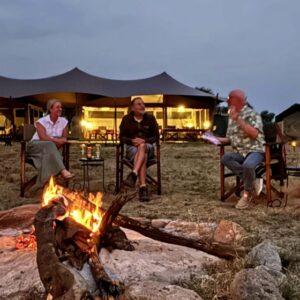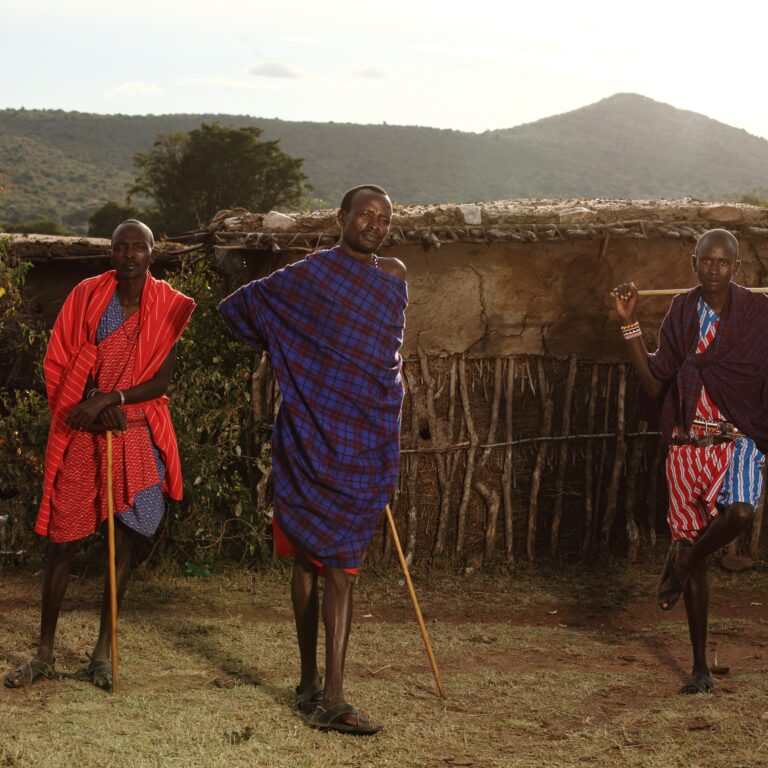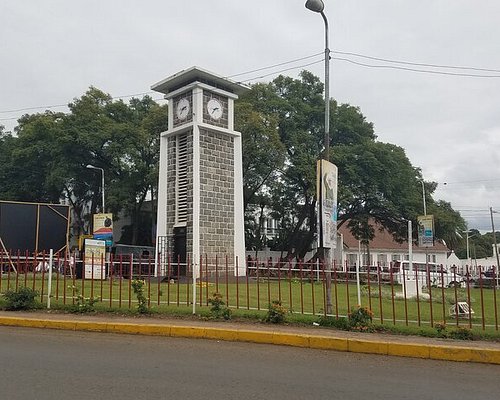Everything You Need to Know About Lake Manyara National Park.
Nestled dramatically at the base of the Great Rift Valley’s western escarpment, Lake Manyara National Park is a compact yet incredibly diverse wilderness that often surprises first-time visitors. Though smaller than its illustrious neighbors like the Serengeti and Ngorongoro, Manyara packs an astonishing array of habitats into its modest size, creating a vibrant ecosystem that supports a remarkable concentration of wildlife.
From its lush groundwater forests to its vast grassy floodplains and the glistening alkaline lake that gives the park its name, Lake Manyara offers a unique and intimate safari experience. It’s a place where majestic elephants roam through dense woodlands, where millions of flamingos paint the horizon pink, and where, famously, lions occasionally choose to lounge in the branches of acacia trees. This guide will unveil the myriad charms and practicalities of exploring Lake Manyara National Park.
1. Overview – Lake Manyara National Park
Lake Manyara National Park covers an area of approximately 330 square kilometers (127 sq mi), with the shallow, alkaline Lake Manyara itself occupying up to two-thirds of the park’s total area during the wet season. Established in 1960, its narrow strip of land is squeezed between the towering Rift Valley escarpment to the west and the lake to the east.
This unique geographical positioning results in an exceptional diversity of ecosystems within a relatively small space. Visitors can traverse dense groundwater forest, open grasslands, acacia woodlands, hot springs, and the expansive lake. This ecological richness allows for a surprisingly high concentration of wildlife, making it a compelling stop on Tanzania’s Northern Safari Circuit. It’s renowned not only for its famed tree-climbing lions but also for its massive baboon troops, prolific birdlife, and large elephant populations.
2. Safari Reviews – Lake Manyara National Park
Safari reviews for Lake Manyara National Park often highlight its surprising charm and diversity, particularly for a park of its size. Visitors frequently praise its beautiful scenery, distinct from the vast plains of the Serengeti, and the opportunity for unique activities like walking safaris and canoeing (seasonal).
Key Highlights:
Scenic Beauty: The dramatic Rift Valley escarpment as a backdrop, lush forests, and the shimmering lake often receive high praise.
Diverse Wildlife: Reviewers appreciate the variety of animals packed into a small area, especially the large baboon troops and elephant herds.
Birdwatching: For bird enthusiasts, Manyara is consistently rated highly for its abundant and diverse avian life.
Unique Activities: Walking safaris and canoeing on the lake (when water levels permit) are often cited as memorable, intimate experiences.
Common Feedback: While the park is smaller and lacks the “Big Five” guarantee of Ngorongoro (rhinos are absent, and leopards/lions can be elusive), visitors find its unique offerings and accessible wildlife make it a worthwhile inclusion on a Northern Circuit itinerary. The possibility of seeing tree-climbing lions remains a major draw and a fun talking point.
3. Wildlife & Animals – Lake Manyara National Park
Lake Manyara’s varied habitats support a thriving animal population. While the park does not boast the same density of lions or guarantee of rhinos as some larger parks, it offers compelling sightings of specialized species and large herds.
Tree-Climbing Lions: Lake Manyara is famously known for its elusive tree-climbing lions. While not a daily guarantee, sightings of lions draped over the branches of acacia trees are a major draw and a unique photographic opportunity. Their behavior is thought to be a response to biting tsetse flies, or simply a way to escape the heat and gain a vantage point.
Large Mammals:
Elephants: Manyara is home to significant elephant herds, often seen moving gracefully through the groundwater forest or along the lake shores.
Baboons: The park boasts one of the largest concentrations of baboons in Africa, offering entertaining and often close-up encounters.
Buffalo: Large herds of Cape buffalo are common, particularly in the open grasslands.
Hippos: Numerous hippos can be found wallowing in the hippo pools near the lake, especially at the popular picnic site.
Other Herbivores: Zebras (less common than in Serengeti), giraffes (often seen browsing in the woodlands), warthogs, various antelopes (impala, wildebeest, bushbuck, waterbuck, dik-dik), and blue monkeys are commonly sighted.
Predators: Besides the lions, leopards are present but highly elusive. Spotted hyenas and various jackals (black-backed, golden) can also be seen.
4. Birds – Lake Manyara National Park
Lake Manyara is a true ornithological paradise, with over 400 recorded bird species, making it a must-visit for birdwatchers. The park’s diverse habitats provide an ideal home for a wide variety of avian life.
Water Birds: The alkaline Lake Manyara itself is a magnet for water birds, often hosting millions of flamingos (both Greater and Lesser), creating breathtaking pink panoramas, especially during the wet season. Other common water birds include:
Great White Pelicans and Pink-backed Pelicans
Various storks (Yellow-billed, Marabou, Open-billed)
Cormorants, spoonbills, and various ducks and geese
Raptors: The skies above the park are patrolled by magnificent birds of prey, including African Fish Eagles, Martial Eagles, Crowned Eagles, Augur Buzzards, and various kites.
Forest Birds: The lush groundwater forest is home to a unique array of forest-dwelling species:
Silvery-cheeked Hornbills
Crested Guineafowl
Emerald Cuckoos
Various turacos and colorful sunbirds
Other Notable Birds: Look for Crowned Cranes in marshy areas, Hadada Ibises, and various starlings and weavers. The diversity means there’s always something new to spot.
5. Best Time to Visit – Lake Manyara National Park
Lake Manyara National Park offers excellent wildlife viewing year-round due to its permanent water sources and diverse habitats. However, the “best time” depends on your primary interests:
Dry Season (June to October):
Pros: This is generally considered the best time for general wildlife viewing. Animals congregate around the permanent water sources of the lake and rivers, making them easier to spot. Roads are dry and easily navigable. Weather is typically dry, sunny, and pleasant. This period is also ideal for walking safaris and viewing large mammals.
Cons: The landscape can be quite dusty. Flamingo numbers on the lake can be lower as they migrate to other breeding grounds during the driest months.
Wet Season (November to May):
Pros: The landscape transforms into a lush, vibrant green, creating stunning photographic backdrops. This is the best time for birdwatching, with migratory birds present and flamingo numbers often at their peak on the lake. Fewer tourists, leading to a more intimate experience and often lower prices for accommodation.
Cons: Roads can be muddy and challenging to navigate, potentially impacting accessibility. Short, heavy downpours can occur, usually in the afternoon. Thicker vegetation can make spotting some animals more challenging. For optimal wildlife viewing and walking safaris, June to October is ideal. For birdwatching, lush scenery, and fewer crowds, November to May is excellent, provided you don’t mind some rain.
6. Weather & Climate – Lake Manyara National Park
Lake Manyara National Park experiences a relatively consistent tropical climate, though temperatures can vary depending on altitude (from the lake to the escarpment rim).
Temperatures:
Daytime: Generally warm to hot throughout the year, averaging 25-30°C (77-86°F). The groundwater forest can feel humid.
Nights & Early Mornings: Cooler, dropping to around 18-22°C (64-72°F).
Rainfall:
Long Rains: March to May sees the heaviest rainfall, often characterized by heavy afternoon thunderstorms.
Short Rains: November to December brings shorter, less intense rain showers.
Dry Season: June to October is typically dry with very little to no rainfall.
Layering is Key: Despite the generally warm climate, packing layers is always recommended to adapt to varying conditions, especially for early morning game drives.
7. Getting There – Lake Manyara National Park
Lake Manyara National Park is an integral part of Tanzania’s Northern Safari Circuit and is easily accessible by road or air.
By Road:
Most visitors travel to Lake Manyara as part of a multi-day safari circuit from Arusha. The drive from Arusha to the park entrance takes approximately 2-2.5 hours on good paved roads.
It’s a convenient stop between Tarangire National Park and the Ngorongoro Conservation Area.
By Air:
The park has its own airstrip, Lake Manyara Airstrip, which is located very close to the park entrance.
Scheduled light aircraft flights connect Lake Manyara to Arusha, the Serengeti, and Zanzibar. This is a popular option for those who wish to minimize long road transfers.
International Gateway: Most international flights arrive at Kilimanjaro International Airport (JRO), near Arusha. From JRO, it’s about a 3-hour drive to Manyara, or a short flight to Lake Manyara Airstrip.
8. Malaria & Safety – Lake Manyara National Park
Malaria: Lake Manyara National Park is located in a malaria risk zone. It is highly recommended to consult your doctor or a travel clinic at least 4-6 weeks before your trip for advice on malaria prophylaxis (anti-malarial medication). In addition:
Use insect repellent containing DEET (or an effective natural alternative), especially at dawn and dusk.
Wear long sleeves and trousers in the evenings to minimize exposed skin.
Sleep under mosquito nets if provided by your accommodation.
Safety:
Wildlife: Always remember you are in a wild environment with dangerous animals. Never exit your safari vehicle unless at designated picnic areas or under explicit instruction from your guide.
Listen to your Guide: Your safari guide is highly trained and experienced. Always follow their instructions meticulously regarding animal behavior and safety protocols. Their priority is your safety.
Unfenced Camps: Many tented camps and lodges within or near the park are unfenced, meaning wild animals can roam through the property, especially at night. Always accept an escort from lodge staff to and from your room after dark.
Respectful Viewing: Maintain a respectful distance from wildlife. Avoid loud noises, sudden movements, or attempting to attract animals’ attention.
Travel Insurance: Comprehensive travel insurance, including medical evacuation, is absolutely essential for any safari to Tanzania.
9. Accommodations – Lake Manyara National Park
Lake Manyara offers a good range of accommodation options, both within the park and in the surrounding Mto wa Mbu and Karatu areas, catering to different budgets and styles.
Within the Park:
Luxury: Manyara Tree Lodge (one of the most unique and luxurious options, with treehouse-style suites, offering an intimate and immersive experience within the forest).
Public Campsites: Several basic public campsites are available for budget camping safaris.
On the Rift Valley Escarpment (with views of the lake):
Mid-range/Luxury: Lake Manyara Serena Safari Lodge (classic, well-established with excellent views), Lake Manyara Kilimamoja Lodge, Escarpment Luxury Lodge. These offer stunning panoramas of the lake and the plains.
In Mto wa Mbu & Karatu Areas (nearby towns):
Budget: Various guesthouses and basic hotels in Mto wa Mbu town.
Mid-range: Twiga Campsite & Lodge (Mto wa Mbu), Farm of Dreams Lodge (Karatu).
Luxury: Plantation Lodge (Karatu, charming coffee farm setting), Gibb’s Farm (Karatu, historic farm, ultra-luxury).
10. Safari Packages – Lake Manyara National Park
Lake Manyara National Park is almost always included as part of a longer safari itinerary on Tanzania’s Northern Circuit. It serves as an excellent introduction or a refreshing stop between other major parks.
Typically included in: 3-day, 4-day, 5-day, or longer Northern Circuit safaris that combine it with Tarangire, Ngorongoro Crater, and the Serengeti.
Family Safaris: Lake Manyara is excellent for families due to its diverse activities (walking, canoeing) and highly visible baboon and elephant populations. Many nearby lodges are family-friendly.
Honeymoon/Couple Safaris: Romantic lodges on the escarpment offer stunning views and intimate experiences.
Luxury Safaris: High-end lodges like Manyara Tree Lodge offer unparalleled comfort and unique experiences.
Seniors Safaris: The park’s relatively compact size and good roads make it accessible.
Student/Budget Safaris: Day trips are affordable, and camping options are available.
Mid-range Safaris: Numerous mid-range lodges around the park offer comfortable stays.
Most packages include park fees, accommodation, meals, game drives in 4×4 vehicles, and a professional safari guide. Optional activities like walking safaris or canoeing might be extra.
11. Packing List for Lake Manyara National Park
Given Manyara’s varied activities (including potential walking/canoeing) and its specific climate, here’s a tailored packing list:
Clothing (Layering is Key):
Neutral Colors: Khaki, green, brown (avoid bright colors, white for game drives).
Long-sleeved shirts: 2-3 lightweight, breathable for sun protection, insect bites, and warmth in cooler mornings/evenings.
T-shirts/Short-sleeved shirts: 3-4 for daytime.
Safari Trousers: 2-3 pairs, lightweight, quick-drying. Convertible trousers are ideal for walking safaris.
Warm Fleece/Sweater/Light Jacket: Essential for chilly early morning game drives and evenings.
Lightweight Rain Jacket/Poncho: Especially during the wet season.
Swimwear: If your accommodation has a pool.
Footwear:
Comfortable Walking Shoes/Sneakers: Sturdy and well-broken-in, essential for game drives and highly recommended for walking safaris.
Sandals/Flip-Flops: For relaxing at camp.
Waterproof Sandals/Water Shoes: (Optional but recommended for canoeing or if you plan to wade into the lake/wet areas).
Socks: Several pairs (cotton or moisture-wicking).
Headwear & Eye Protection:
Wide-brimmed Safari Hat: For sun protection.
Sunglasses: Essential for glare off the lake and dusty roads.
Health & Toiletries:
Personal Medications & Basic First-Aid Kit.
Malaria Prophylaxis: As advised by your doctor.
Insect Repellent (with DEET): Crucial, especially in the forest areas.
High SPF Sunscreen & Lip Balm with SPF.
Hand Sanitizer.
Moisturizer & Hydrating Wipes: For dust and dry air.
Photography & Electronics:
Camera Gear: DSLR or mirrorless with a good telephoto lens (e.g., 100-400mm or 150-600mm) for wildlife, and a versatile zoom (e.g., 24-70mm) for landscapes.
Spare Batteries & Memory Cards.
Chargers & Universal Travel Adapter (Type G/D).
Binoculars: An absolute must for birdwatching and spotting distant wildlife.
Headlamp/Flashlight: For use in camp at night.
Dust Protection for Camera Gear: Rain cover, plastic bags, lens cleaning kit.
Miscellaneous:
Small Daypack/Backpack: For daily essentials on game drives or walks.
Reusable Water Bottle.
Small Notebook & Pen.
12. Interesting Facts about Lake Manyara National Park
Tree-Climbing Lions: While not exclusive to Manyara (they are also seen in Queen Elizabeth National Park in Uganda), Manyara is one of the most famous places for this unusual behavior.
Giant Baboon Troops: The park has one of the highest concentrations of baboons in Africa, often seen in large, active troops.
Diverse Habitats in Small Area: It showcases a remarkable ecological diversity, from groundwater forest to hot springs, in a relatively small space.
Hot Springs: The southern part of the park features hot springs, a unique geological feature.
Ernest Hemingway’s “Green Hills of Africa”: The area around Lake Manyara inspired parts of Hemingway’s famous non-fiction book, highlighting its classic safari allure.
Lake Fluctuation: The size of Lake Manyara can vary dramatically between the wet and dry seasons, impacting flamingo numbers and driving migration patterns for other water birds.
13. Top Unique Things and Activities to Do in Lake Manyara National Park
Beyond standard game drives, Lake Manyara offers several distinctive activities:
Game Drives: The primary activity, allowing you to traverse the diverse landscapes and spot wildlife.
Night Game Drives: Offered by select lodges (e.g., Manyara Tree Lodge) and permitted in certain areas, this thrilling activity allows you to discover nocturnal animals like civets, genets, bushbabies, and nocturnal predators.
Walking Safaris: Guided walks (usually 2-3 hours) with an armed ranger offer a more intimate experience of the bush, focusing on tracks, smaller creatures, and botany.
Canoeing on Lake Manyara: (Seasonal, dependent on water levels) A serene and unique activity, gliding silently on the lake’s surface, offering unparalleled birdwatching opportunities and close-up views of hippos from a safe distance.
Cultural Tours in Mto wa Mbu: Located just outside the park, the bustling town of Mto wa Mbu offers vibrant local markets, banana plantations, and cultural tours that provide insight into local life and tribal interactions.
Birdwatching: Simply observing the immense variety and sheer numbers of birds is a top activity here, especially around the lake.
14. Lake Manyara National Park FAQs
Can you see the Big Five in Lake Manyara National Park? You can see buffalo, elephants, and sometimes lions and leopards. However, rhinos are absent from the park, so you cannot see all of the Big Five here.
How long should I spend in Lake Manyara National Park? Most visitors spend one full day (or one night with two half-day game drives) in Lake Manyara National Park. This allows enough time to explore its diverse habitats and enjoy optional activities.
Is Lake Manyara National Park worth visiting? Yes, absolutely. While smaller, its unique tree-climbing lions, large baboon troops, prolific birdlife, varied landscapes, and opportunities for walking/canoeing safaris make it a distinctive and highly rewarding stop on a Northern Circuit itinerary.
What is the best time to see flamingos in Lake Manyara? Flamingo numbers are generally highest during the wet season (November to May), when the lake’s water levels are higher, providing more suitable feeding grounds.
Is it safe to do a night drive in Lake Manyara? Yes, when booked through a reputable safari operator and conducted with an armed, experienced guide, night drives are very safe and offer a unique perspective on nocturnal wildlife.
Lake Manyara National Park, with its compact size and immense diversity, proves that great things come in small packages. It’s a captivating wilderness that promises unique encounters and a deeply immersive safari experience at the foot of Africa’s iconic Rift Valley.

